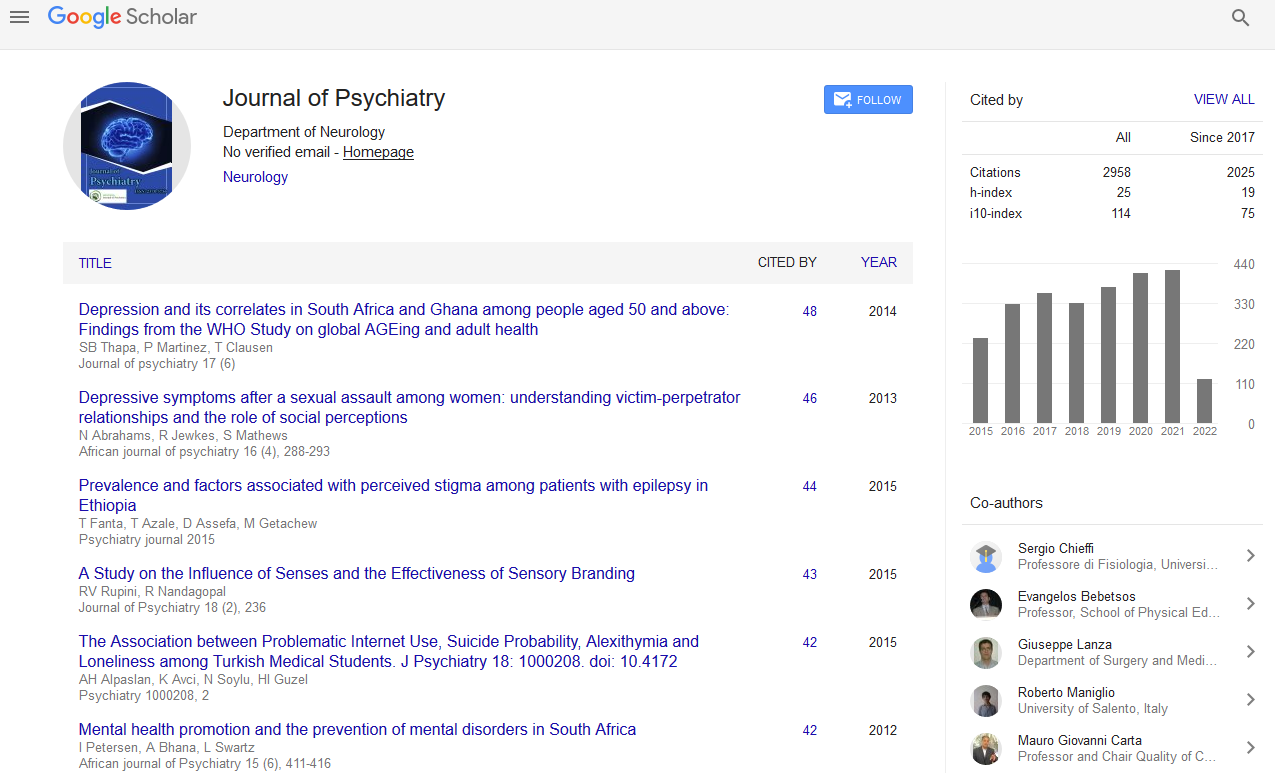PMC/PubMed Indexed Articles
Indexed In
- RefSeek
- Hamdard University
- EBSCO A-Z
- OCLC- WorldCat
- SWB online catalog
- Publons
- International committee of medical journals editors (ICMJE)
- Geneva Foundation for Medical Education and Research
Useful Links
Share This Page
Open Access Journals
- Agri and Aquaculture
- Biochemistry
- Bioinformatics & Systems Biology
- Business & Management
- Chemistry
- Clinical Sciences
- Engineering
- Food & Nutrition
- General Science
- Genetics & Molecular Biology
- Immunology & Microbiology
- Medical Sciences
- Neuroscience & Psychology
- Nursing & Health Care
- Pharmaceutical Sciences
The validation of positive and negative rumination scale among school students
Joint Event on World Congress on Psychiatry & Psychological Syndromes & 29th International Conference on Adolescent Medicine and Child Psychology
December 06-07, 2018 | Rome, Italy
Hongfei Yang
Zhejiang University, China
Scientific Tracks Abstracts: J Psychiatry
Abstract:
The positive and negative rumination scale was originally developed among college students. In this study, 718 school students (357 male, 359 female, 2 missing) with an average age of 14.3 years (SD = 2.4; range = 9-19 years) were recruited from elementary and high schools in mainland China. They were randomly split into two samples (ns = 361 and 357) for exploratory factor analysis (EFA) and confirmatory factor analysis (CFA). Results from exploratory and confirmatory factor analyses confirmed the measure???s 5 first-order and 2 second-order factors structure: Positive Rumination consisting of 2 firstorder factors (i.e., Enjoy Happiness and Positive Coping) and Negative Rumination consisting of 3 first-order factors (i.e., Suppress Happiness, Self Deny and Negative Attribution). Moreover, correlation analyses provided evidence for the subscales??? differential validity: Positive Rumination showed positive correlations with positive indicators of psychological adjustment (e.g., life satisfaction) and negative correlations with negative indicators of psychological adjustment (e.g., depression), whereas Negative Rumination showed negative correlations with positive indicators of psychological adjustment (e.g., life satisfaction) and positive correlations with negative indicators of psychological adjustment (e.g., depression). In addition, all PANRS scores showed satisfactory reliability (Cronbach???s alpha) and temporal stability (test-retest). Overall the findings suggest that the PANRS is a reliable and valid instrument to assess positive and negative aspects of rumination among school students.
Biography :
Hongfei Yang has earned his B.S. at the age of 20 years from Zhejiang University, his M.S. from State University of New York at Oswego, and his Ph.D. from Zhejiang University. He is the director of the Association of School Psychology and Counseling of Zhejiang Province. He has published more than 90 papers in reputed journals and is an supervisor of master degree of counseling psychology at Zhejiang University.
E-mail: hongfeiy2004@126.com


